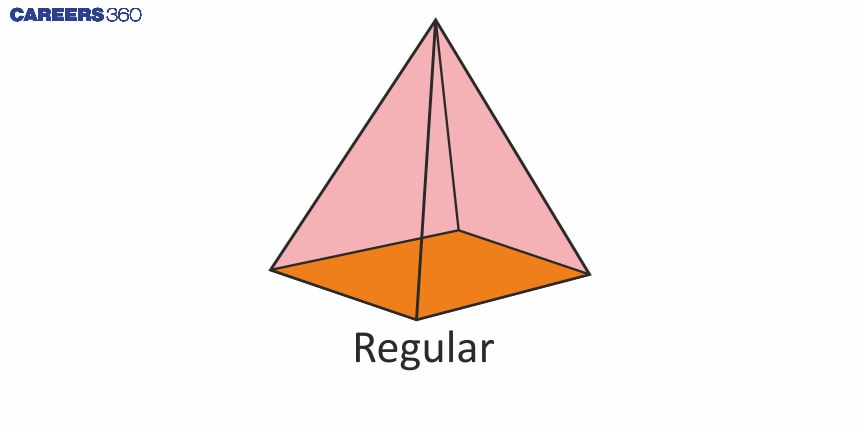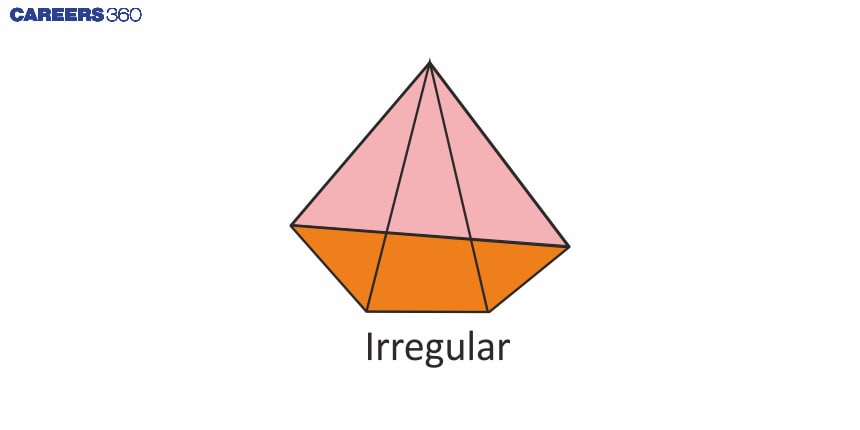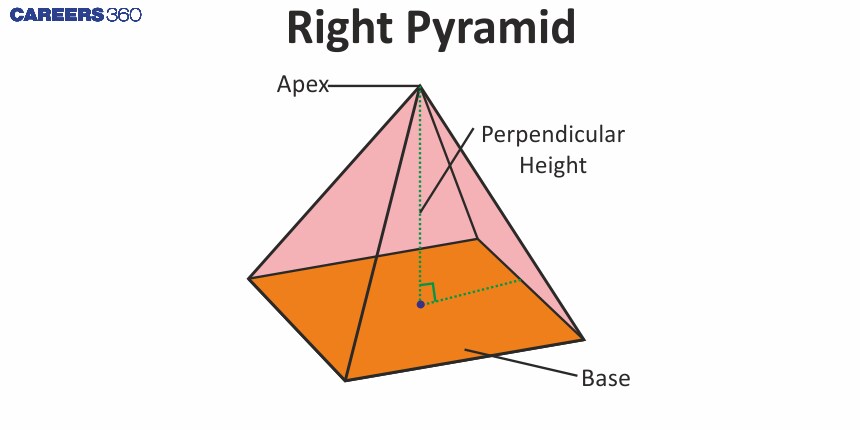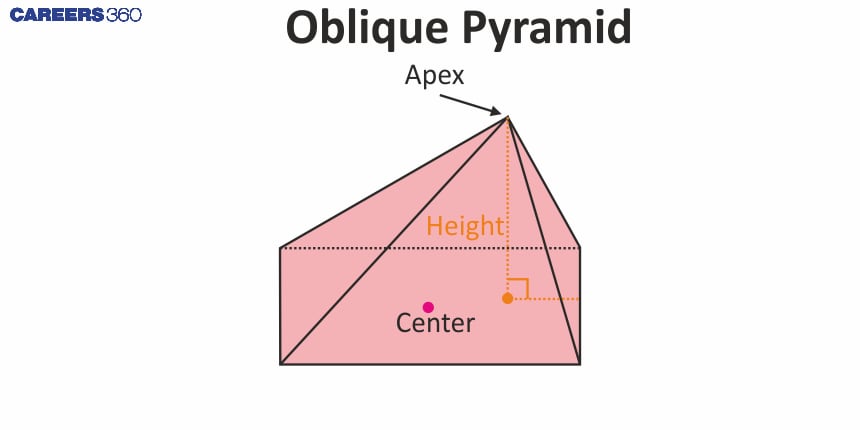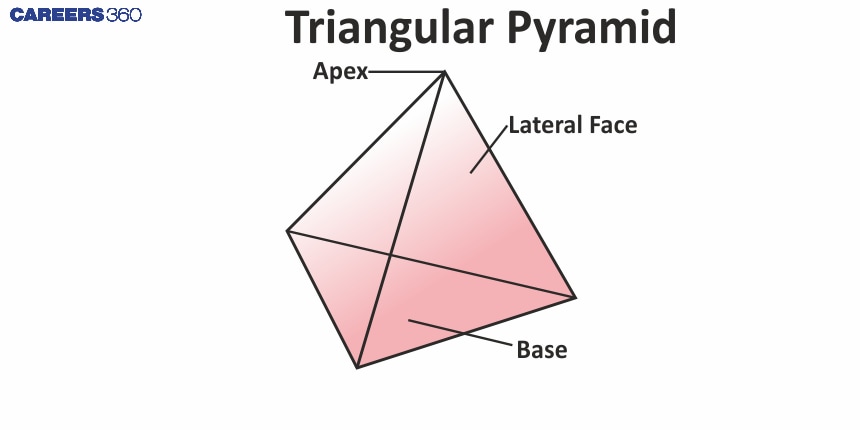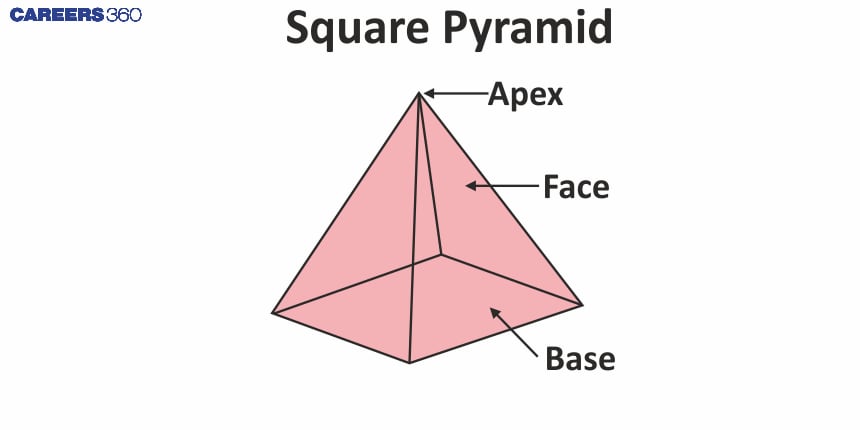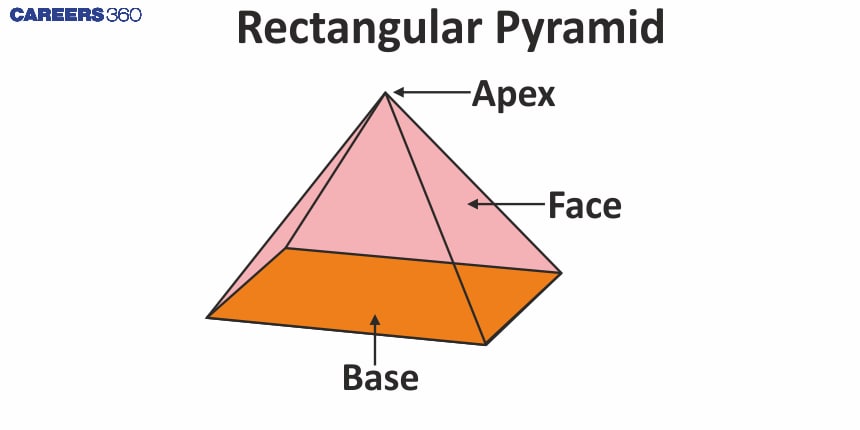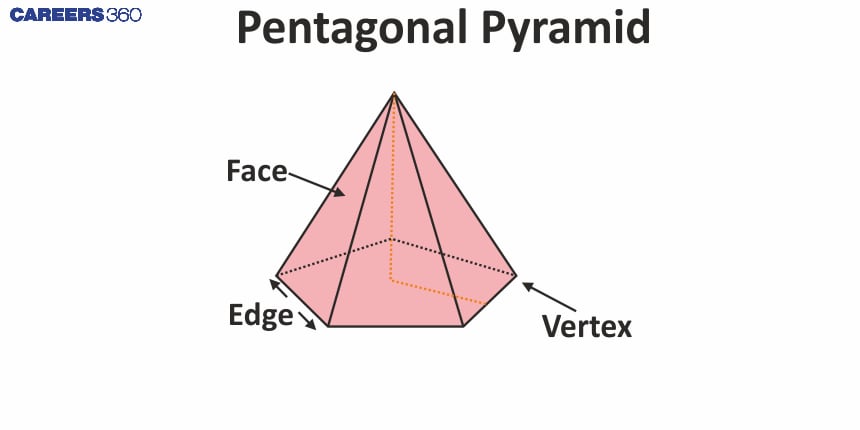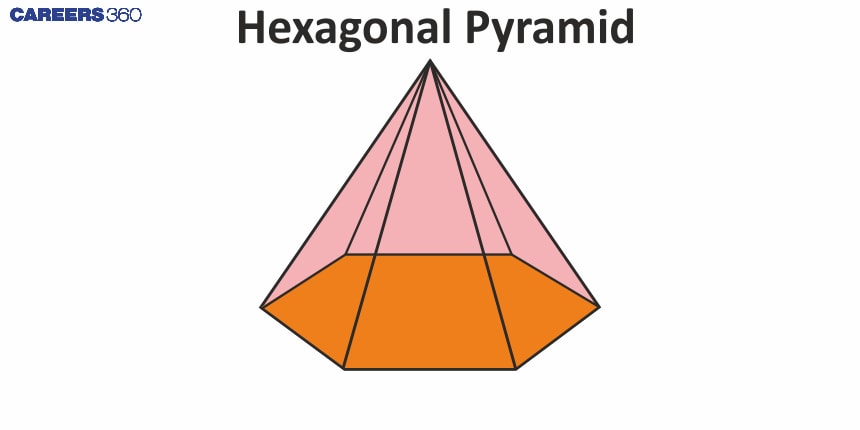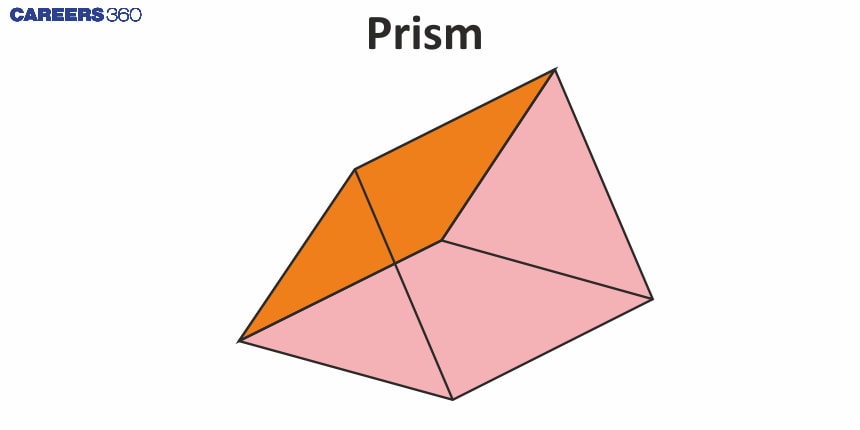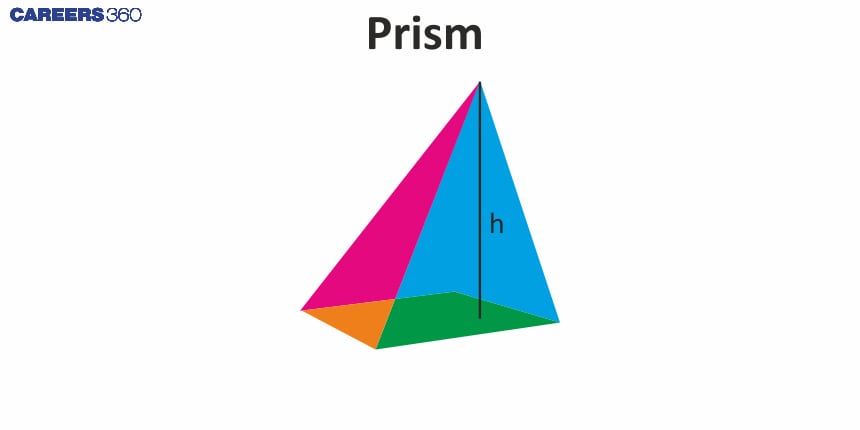Surface Area and Volume of a Pyramid: Formula, Calculator
The surface area and volume of a pyramid are one of the crucial topics in mensuration. The surface area of a pyramid is the region taken up by the surfaces of the pyramid and the volume of a pyramid is the total space occupied by the pyramid.
We will also discuss “surface area and volume of a square pyramid”, “surface area and volume of a hexagonal pyramid”, “surface area and volume of a rectangular pyramid”, and “surface area and volume of a triangular pyramid” in this chapter.
Also, you will find “surface area and volume of a pyramid worksheet’’, “surface area and volume of a pyramid formula”, “surface area and volume of a square pyramid”, and “surface area and volume of pyramids worksheet answers”in this article.
“surface area and volume of a pyramid calculator” and “surface area and volume of a triangular pyramid calculator” are used to find the surface area and volume ny directly placing the values of dimensions.
What is a Pyramid?
A pyramid is a three-dimensional shape with a polygonal base and triangular faces, which join at the apex or vertex.
The triangular faces are called lateral faces. The number of lateral faces equals the number of sides on its base.
All the triangular faces smoothly diverge to a common point at the top called the apex. Apex always stands opposite to the base.
Edges of the pyramid are line segments formed by two intersecting faces.
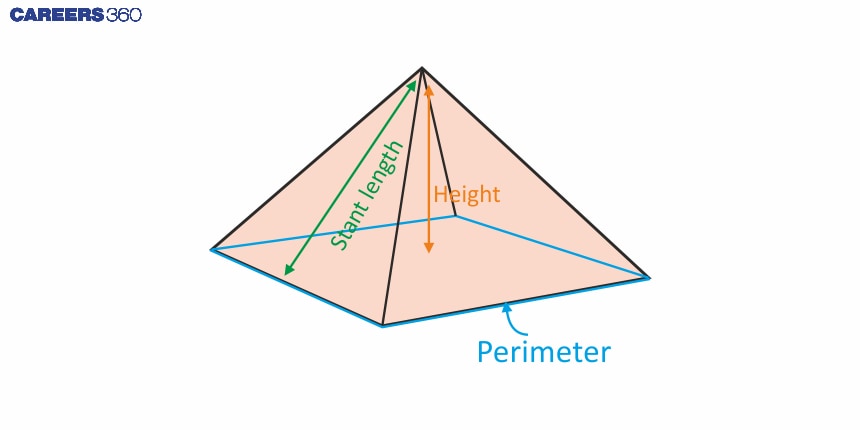
Pyramids in real life are also made using this mechanism.
The picture below is the Pyramid of Giza in Egypt, one of the world's oldest and largest pyramids.
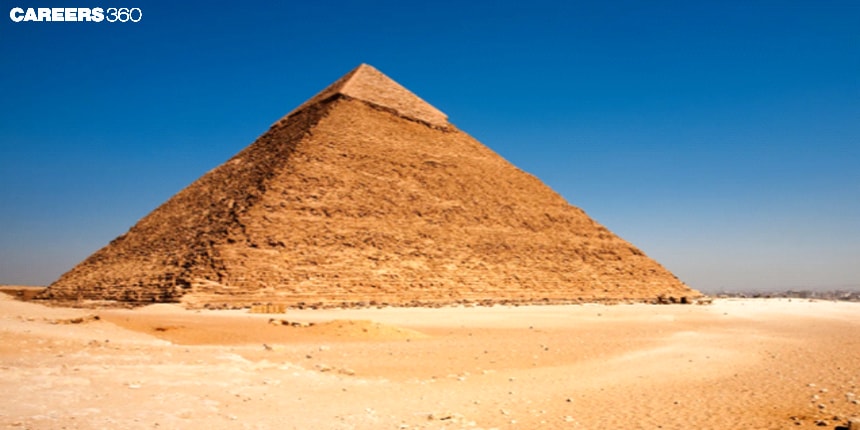
Properties of Pyramid
A Pyramid has some important properties which make it different from other three-dimensional geometrical shapes.
Some of its properties are:
The base of a pyramid is a polygon like a triangle, square, or rectangle.
The apex of a pyramid is the single point where all the triangular faces diverge and meet.
All faces of a pyramid except the base are called lateral faces.
A pyramid has only one base and several triangular faces which is equal to the number of sides of the base.
A pyramid has vertices at the base corners and one at the apex.
The slant height of the pyramid is the distance from the apex to the midpoint of a base edge.
Right pyramids with regular polygon bases are symmetric around their vertical axis.
Learning these properties is very important to differentiate Pyramid from other three-dimensional shapes.
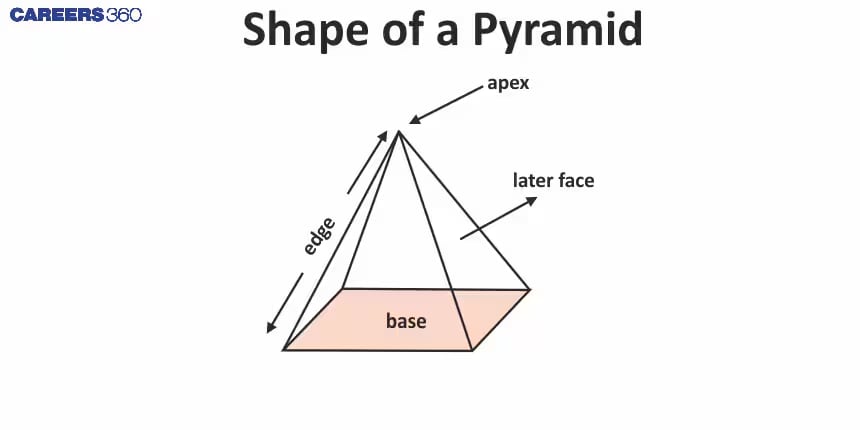
Examples of Pyramid
Regular pyramid:
Irregular pyramid:
Right pyramid:
Oblique pyramid:
Types | Illustration | Description |
Regular Pyramid |
| A pyramid with a regular polygon at its base and apex situated directly above the base is called a regular pyramid. The sides and bases of the base polygon are equal. |
Irregular Pyramid |
| A pyramid with an irregular polygon at its base and apex situated not directly above the base is called an irregular pyramid. The sides and bases of the base polygon are unequal. |
Right Pyramid |
| A pyramid with an apex directly above the centre of the base is called a right pyramid. |
Oblique Pyramid |
| A pyramid with a slightly slanted shape and apex directly not above the centre of the base is called an oblique pyramid. |
Types of Pyramids based on the shape of the base
There are various types of Pyramids based on the shape of the base.
Triangular pyramid
Square pyramid
Rectangular pyramid
Pentagonal pyramid
Hexagonal pyramid
Types | Illustration | Definition | Base edges (n) | Faces (n + 1) | Vertices (n +1 ) | Edges (2n) |
Triangular Pyramid |
| A pyramid with a triangle at its base. Example: Triangular Dice in board games | 3 | 4 | 4 | 6 |
Square Pyramid |
| A pyramid with a square at its base. Example: The Great Pyramid of Giza in Egypt | 4 | 5 | 5 | 8 |
Rectangular Pyramid |
| A pyramid with a rectangle at its base. Example: Modern architecture structures | 4 | 5 | 5 | 8 |
Pentagonal Pyramid |
| A pyramid with a pentagon at its base. Example: Some molecular structures in Chemistry | 5 | 6 | 6 | 10 |
Hexagonal Pyramid |
| A pyramid with a square at its base. Example: Some Beehive cells and Crystal formations | 6 | 7 | 7 | 12 |
Difference between Prism and Pyramid
Prism and Pyramid both are three-dimensional polyhedrons with a polygon at their base.
But they have some differences.
Those are:
Prism | Pyramid | |
Illustration |
|
|
Bases | Two parallel congruent polygon | One polygon |
Lateral Faces | Rectangular | Triangular |
Edges | If the base has n sides, then the number of edges will be 3n. | If the base has n sides, then the number of edges will be 2n. |
Verices | If the base has n sides, then the number of vertices will be 2n. | If the base has n sides, then the number of vertices will be n + 1. |
Surface area | It includes two bases and lateral faces. | It includes one base and lateral faces. |
What is the Surface area of a Pyramid?
The surface area of a pyramid includes the base area and the lateral surface area of the pyramid.
There are different types of formulae to calculate the total surface area, lateral surface area, and base area of the pyramid.
Now we will discuss that.
The formula for the surface area of a Pyramid
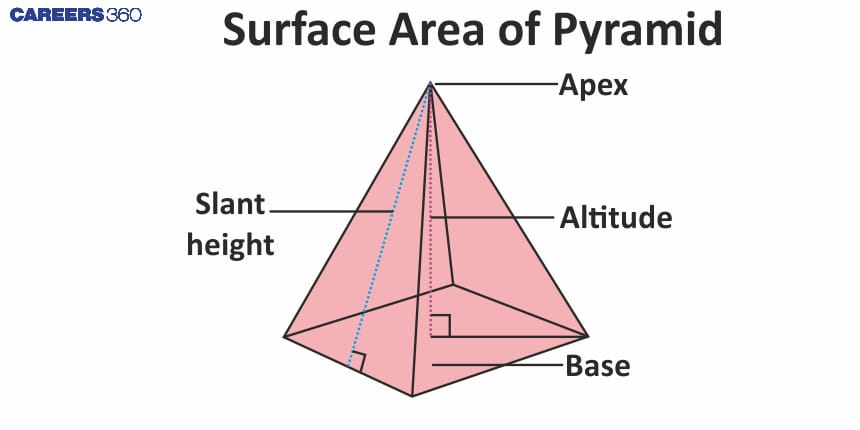
Lateral Surface Area of a Pyramid
The lateral surface area of a pyramid is calculated by:
This formula changes whenever the shape of the base of a pyramid is changed.
Example:
A right pyramid stands on a base 16 cm square and its height is 15 cm. The area (in cm2) of its slant surface is:
Side of a square,
Height,
Perimeter
Slant height of the pyramid,
Lateral surface area =
=
= 544 cm2
Hence, the correct answer is 544.
Total Surface Area of a Pyramid
The base area of a pyramid will be the base area of the polygon.
There are two different types of formulae to calculate the total surface area of a pyramid.
When the length of all the side faces is equal, the formula to find the total surface area is:
Base area +
Or
Base area + Lateral surface area
This formula changes whenever the shape of the base of a pyramid is changed.
Example:
What is the total surface area of a pyramid whose base is a square with a side 8 cm and the height of the pyramid is 3 cm?
Given,
The side of the square base = 8 cm and the height of the pyramid = 3 cm
The slant height (l) of the pyramid needs to be evaluated,
⇒ l2 = (
⇒ l2 = 42 + 32
⇒ l2 = 16 + 9
⇒ l2 = 25
⇒ l = 5 cm
The total surface area of the pyramid
= (Base Area) +
= 64 +
= 64 + 16 × 5
= 64 + 80
= 144 cm2
Hence, the correct answer is 144 cm2.
What is the Volume of a Pyramid?
The total area enclosed by a pyramid is called the volume of a pyramid. We measure the volume in cubic units.
Formula for the Volume of a Pyramid
The general formula to find the volume of a pyramid is:
This formula changes whenever the shape of the base of a pyramid is changed.
Example:
The base of a pyramid is an equilateral triangle of side 10 m. If the height of the pyramid is
The volume of the pyramid =
The area of the equilateral triangle =
List of Formulae
Lateral Surface Area(LSA) | Whole Surface Area(WSA) | Volume | |
Triangular Pyramid | Base area + | ||
Square Pyramid | 2 × length of the square × Slant height | (length of the square)2 + 2 × Base × Slant height | |
Rectangular Pyramid | |||
Pentagonal Pyramid | |||
Hexagonal Pyramid | 3 × Base × Slant height | 3 × Base (Apothem + Slant height) |
Note: The apothem (sometimes abbreviated as apo) of a regular polygon is a line segment from the center to the midpoint of one of its sides.
Important points
Volume of a pyramid =
The volume of the prism = Base area × height
The total surface area of a pyramid = Base area + 3 × The area of each triangular face
Total surface area of the pyramid = (Base Area) +
Lateral surface area =
A regular triangular pyramid, also known as a tetrahedron, has four equilateral triangles as its faces.
Practice Questions
Q1. A prism and a pyramid have the same base and the same height. Find the ratio of the volumes of the prism and the pyramid.
2 : 3
3 : 1
1 : 3
3 : 2
Hint: Use the formulae:
The volume of the prism = Base area × height
Volume of pyramid =
Answer:
The base area of the prism = Base area of the pyramid
Height of prism = Height of pyramid
Ratio of volumes of prism and pyramid
= (Base area × height) : (
= 3 : 1
Hence, the correct answer is 3 : 1.
Q2. A pyramid has an equilateral triangle as its base, of which each side is 8 cm. Its slant edge is 24 cm. The whole surface area of the pyramid (in cm2) is:
Hint: The total surface area of a pyramid = Base area + 3 × The area of each triangular face
Answer:
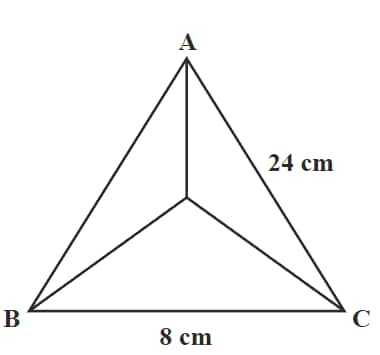
Total Surface area of a pyramid = Base area + 3 × The area of each triangular face
The area of a equilateral triangle with sides 8 cm =
Let the height of the pyramid be
The area of each triangular face =
Total surface area of a pyramid =
Hence, the correct answer is
Q3. A right pyramid stands on a square base of diagonal
520 cm2
420 cm2
360 cm2
260 cm2
Hint: Use the formulas:
Area of the slant surface =
Perimeter,
Slant height,
where
Answer:
Use the formulas:
Area of the slant surface =
Perimeter,
Slant height,
where
Diagonal of square base
Height of the pyramid,
Side of square base,
Perimeter,
Slant height,
Area of the slant surface
Hence, the correct answer is 260 cm2.
Q4. The base of a right pyramid is an equilateral triangle of side
10 cm
12 cm
Hint: Total surface area of a pyramid
Answer:
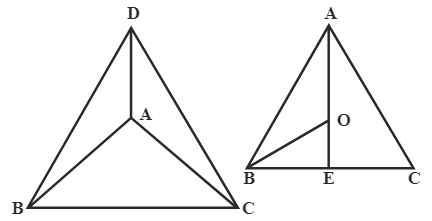
Given: The base of a right pyramid is an equilateral triangle.
Side of a triangle
The total surface area of a pyramid
=
Now, slant height (l)
Base area
Total surface area
⇒
⇒
⇒
⇒
⇒
⇒
Hence, the correct answer is
Q5. The whole surface area of a pyramid whose base is a regular polygon is 340 cm2, the area of its base is 100 cm2, and the area of each lateral face is 30 cm2. Then the number of lateral faces is:
8
9
7
10
Hint: By finding the lateral surface area and dividing it by the area of each lateral face to get the solution.
Answer:
Given: Whole surface area = 340 cm2
Area of each lateral face = 30 cm2
Area of base = 100 cm2
Whole surface area = lateral surface area + area of the base
⇒ 340 = lateral surface area + 100
Thus, number of lateral faces =
Hence, the correct answer is 8.
Q6. The base of a right pyramid is a square of side 10 cm. If the height of the pyramid is 12 cm, then its total surface area is:
400 cm2
460 cm2
260 cm2
360 cm2
Hint: By using the formula: Total surface area = lateral surface area + area of base.
Answer:
Given: Base = 10 cm
Height = 12 cm
Lateral surface area =
Area of base = 10 × 10 = 100 cm2
Hence, the correct answer is 360 cm2.
Q7. The total surface area of a regular triangular pyramid with each edge of length 1 cm is:
4 cm2
Hint: The total surface area of a regular triangular pyramid is 4 times the area of an equilateral triangle.
Answer:
A regular triangular pyramid, also known as a tetrahedron, has four equilateral triangles as its faces.
The surface area of an equilateral triangle
Since a regular tetrahedron has four faces.
The total surface area is four times the surface area of one face
Putting \(a = 1 \, \text{cm}\),
The total surface area of a regular triangular pyramid
Hence, the correct answer is
Frequently Asked Questions (FAQs)
A pyramid is a three-dimensional shape with a polygonal base and triangular faces, which join at the apex or vertex.
The triangular faces are called lateral faces. The number of lateral faces equals the number of sides on its base.
All the triangular faces smoothly diverge to a common point at the top called the apex. Apex always stands opposite to the base.
Edges of the pyramid are line segments formed by two intersecting faces.
A Cone and pyramid shares some characteristics with pyramids.
Both are solid shapes with a single apex and a base, and both have a volume formula involving one-third of the product of the base area and the height.
If the number of sides in a pyramid gets increased to infinity, it becomes a cone. So, we can say a cone is a pyramid. But there are different views on it by different people.
Regular Pyramid | Irregular Pyramid | |
Base | Regular polygon | Irregular Polygon |
Sides and angles | All sides and angles of the base are equal. | All sides and angles of the base are not equal. |
Symmetry | High symmetry, apex directly above the centre | Low symmetry, apex not directly above the centre |
Lateral faces | Congruent isosceles triangles | Non-congruent triangles |
Example | Square pyramid | Rectangular pyramid |
The lateral surface area of a pyramid is calculated by:
The base area of a pyramid will be the base area of the polygon.
There are two different types of formulae to calculate the total surface area of a pyramid.
When the length of all the side faces is equal, the formula to find the total surface area is:
Base area +
When the length of all the side faces is equal, the formula to find the total surface area is:
Base area + Lateral surface area
This formula changes whenever the shape of the base of a pyramid is changed.
The general formula to find the volume of a pyramid is:
